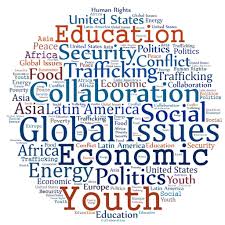Harnessing Technology for Equitable Global Poverty Alleviation: A Multifaceted Approach
This article examines the transformative potential of technology in achieving equitable global poverty alleviation and sustainable development. We will define key concepts and explore how technological advancements can be strategically applied to address poverty across various sectors, ultimately contributing to a more inclusive and prosperous world. Key concepts include sustainable development (meeting present needs without compromising future generations' ability to meet their own), equitable development (fair and just distribution of resources and opportunities), and digital inclusion (ensuring universal access to information and communication technologies).
Strategic Technological Interventions for Poverty Reduction
The following sections detail how technological applications can be leveraged to address poverty effectively, drawing upon relevant theories and models such as the diffusion of innovations theory, which explains how new technologies spread within societies, and the capabilities approach, which focuses on expanding people’s capabilities to achieve their well-being. We will also consider the challenges and limitations in implementation.
1. Bridging the Education Gap: Enhancing Human Capital
Access to quality education is a fundamental driver of economic growth and social mobility. Leveraging technology, specifically through Massive Open Online Courses (MOOCs) and other e-learning platforms, can democratize education, providing opportunities for individuals in underserved communities to acquire knowledge and skills, thereby improving their employment prospects. This approach aligns with human capital theory, which emphasizes the importance of investing in human capabilities to boost productivity and economic growth. The successful implementation requires addressing the digital divide, ensuring reliable internet access and digital literacy training.
2. Fostering Financial Inclusion: Empowering Economic Participation
Mobile banking and digital payment systems have significantly expanded financial access, particularly in developing countries. These technologies provide secure and convenient mechanisms for savings, borrowing, and transactions, empowering individuals and fostering economic participation. This is consistent with the financial inclusion principle, aiming to provide all individuals with access to a range of financial services. Challenges include overcoming digital illiteracy and ensuring the security and reliability of these systems in vulnerable environments.
3. Transforming Agriculture: Enhancing Food Security and Livelihoods
Precision agriculture, utilizing technologies like remote sensing and data analytics, allows farmers to optimize resource use, improve crop yields, and mitigate climate change risks. This contributes to enhanced food security and sustainable livelihoods, particularly in rural areas, aligning with the sustainable intensification approach in agriculture. However, successful implementation requires adapting technologies to local contexts and providing adequate training and support to farmers.
4. Expanding Healthcare Access: Improving Health Outcomes
Telemedicine and mobile health (mHealth) applications significantly increase access to healthcare services, especially in remote regions. These technologies enable remote consultations, monitoring, and the provision of healthcare information, addressing health inequalities and improving health outcomes. This is in line with the health equity principle and leverages the efficiency gains from technological advancements. Challenges involve maintaining data privacy and security, ensuring network reliability, and providing adequate training to healthcare providers.
5. Empowering Entrepreneurship: Access to Capital and Markets
Microfinance institutions and crowdfunding platforms, facilitated by technology, democratize access to capital for entrepreneurs in low-income settings. This enables them to start businesses, create jobs, and improve their economic status. This strategy aligns with the entrepreneurship development theory, focusing on fostering entrepreneurial skills and providing access to resources. Ensuring responsible lending practices and providing business development support are crucial for success.
6. Promoting Sustainable Energy: Addressing Energy Poverty
Renewable energy technologies, such as solar panels and wind turbines, are increasingly accessible and provide clean and affordable energy in off-grid areas. This is critical in addressing energy poverty and supporting sustainable development goals. The transition to renewable energy aligns with environmental sustainability principles and contributes to climate change mitigation. However, high initial investment costs and maintaining infrastructure are important challenges.
7. Strengthening Governance and Transparency: Enhancing Accountability
E-governance initiatives leverage technology to enhance government efficiency, transparency, and accountability, reducing corruption and ensuring more equitable resource allocation. This approach supports the principles of good governance and contributes to a more inclusive decision-making process. Successful implementation requires strong digital infrastructure, cybersecurity measures, and public trust in government digital services.
8. Building Resilience to Disasters: Protecting Lives and Livelihoods
Early warning systems and remote sensing technologies play a vital role in disaster preparedness, response, and recovery, enabling better protection of lives and livelihoods. This aligns with disaster risk reduction strategies, emphasizing preparedness and response capabilities. Effective implementation requires reliable data sources, efficient communication channels, and community participation.
9. Addressing the Digital Divide: Ensuring Universal Access
Bridging the digital divide through affordable internet access, digital literacy training, and access to digital tools is fundamental to achieving equitable poverty alleviation. This initiative supports digital inclusion principles and empowers individuals to participate fully in the digital economy. Effective strategies must involve partnerships between governments, private sector, and civil society.
Conclusions and Recommendations
Technology holds immense potential for achieving equitable global poverty alleviation. By strategically applying technological advancements across various sectors—education, finance, agriculture, healthcare, energy, governance, and disaster management—we can significantly enhance the lives of impoverished communities. Future research should focus on evaluating the long-term impact of specific technological interventions, exploring culturally appropriate adaptation strategies, and addressing the ethical considerations associated with data privacy and algorithmic bias. Governments and international organizations should prioritize investments in digital infrastructure, digital literacy programs, and capacity building initiatives to ensure effective and equitable technology adoption. Collaboration between stakeholders is crucial to creating sustainable solutions and maximizing the transformative potential of technology for poverty eradication.
Reader Pool: What are the most significant ethical considerations that should guide the development and implementation of technology-driven poverty alleviation strategies?
```

